What to do if the leaves of chlorophytum dry?
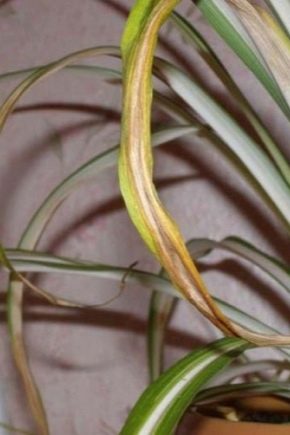
Chlorophytum pleases its owners with beautiful green foliage. However, this is only possible in a situation where the plant is healthy. What to do if the leaves of the indoor flower dry?

Causes
Chlorophytum is pretty easy to care for. That is why many flower growers replenish their collections with this plant. However, non-compliance with the rules of care often becomes the cause of various diseases of a green pet. By the condition of its leaves, one can judge whether there is cause for concern. If they begin to dry a lot, then you need to determine why this is happening and think about the need for treatment.
The following factors can lead to drying of chlorophytum leaves:
- irrational watering;
- unsuitable ambient temperature;
- decrease in humidity in the room;
- leaf parasites and pests;
- late transplant;
- a number of mechanical damages (as a rule, after transplanting a flower into a new pot);
- excessive lighting.
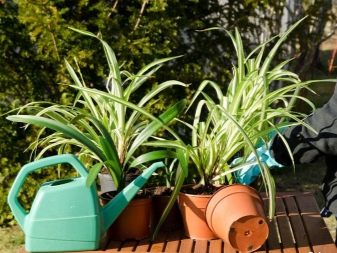
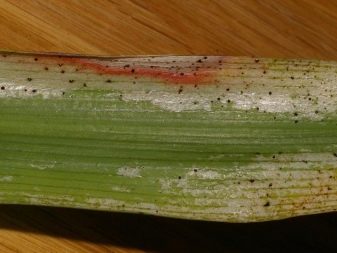
Often, drying of the foliage is accompanied by a change in its color, usually it begins to turn yellow. It usually starts from the ends of the leaves. In case of severe damage, the leaf almost completely changes its color, loses its turgor, and then completely disappears.
If the plant is damaged by parasites, the leaves turn black. In this situation, immediate treatment is already required.
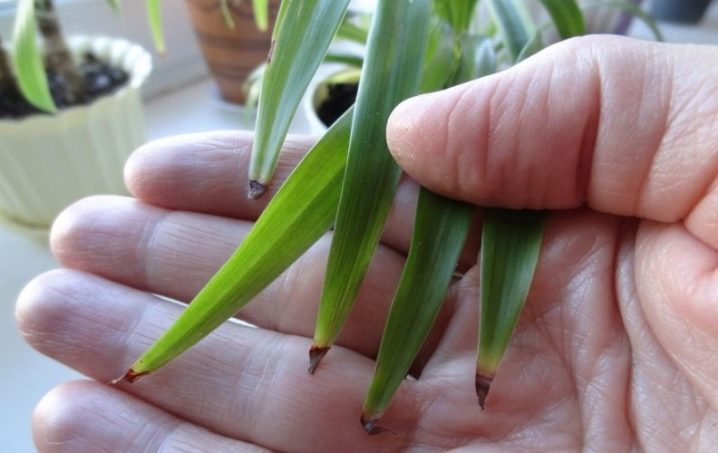
Control measures
The measures applied will depend on the identified hazards. Initial attention is recommended to be paid to the indoor climate indicators.
Light
First, you need to determine how much light the flower is receiving. Chlorophytum is a plant that requires sufficient insolation. It is no coincidence that it is recommended to place it in rooms with south-facing windows. However, it is extremely important that the plant receives diffused light. Thus, if the flower, which is located on the windowsill facing south, has begun to dry, then at noon it is recommended to transfer it to another place.
In summer, in case of severe dryness of the leaves, it is better to keep the plant in a place somewhat distant from the window.

Temperature
An increase in the temperature of the air in the room can also be affected not in the best way. Typically, the plant begins to dry out if this figure exceeds 25-26 ° C. Experts recommend not placing chlorophytums next to heating appliances. Often, the flowers begin to dry strongly in the winter, when the heating is on, then they should be moved away from the batteries.
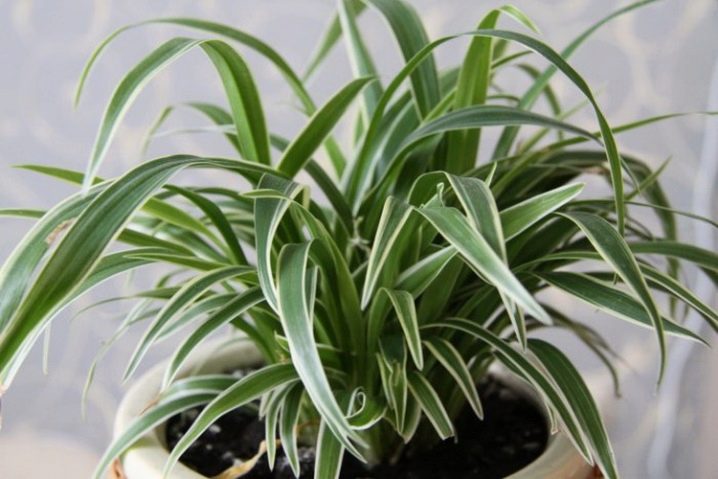
Humidity
To preserve the beautiful color of the leaves, it is necessary to optimize the humidity in the room. Moreover, the values of this indicator in winter and summer for chlorophytum differ. In summer and spring, it is desirable that the humidity in the room where this plant is located is 70-75%. At other times of the year, for good flower growth, it is enough for this indicator of the microclimate to be about 50%.
If, after measuring the humidity, a very low value is detected, then in this case it is worth thinking about purchasing a humidifier. This "home assistant" will help to improve the indoor microclimate, which, in turn, will have a positive effect on the state of not only chlorophytum, but also many other indoor plants.
When the lighting, temperature and humidity of the air are normal, but the chlorophytum leaves continue to dry out, other components of the care need to be adjusted.
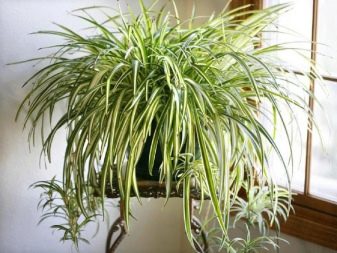

Transfer
Timely transplanting of grown plants is an important procedure that contributes to their active vegetation. If the flower is not transplanted in time, this can lead to damage to its root apparatus. In such a situation, not only the roots themselves suffer, but also the foliage of chlorophytum, since the processes of its vital activity are disrupted. It is necessary to transplant the plant if the roots have already grown strongly. In this case, the pot into which the flower will be transplanted should be chosen at least one third larger than the previous one.
Mechanical damage to the root system during transplantation is another possible cause leading to severe dryness of the leaves. Experts note that the plant should be transplanted carefully, damaged or dead roots should be removed at the same time. This will further help reduce the risk of root rot.
The soil chosen for the plant is also essential for its good growth. A fairly common mistake (especially for beginner growers) is the wrong choice of a nutrient substrate. If the soil has a high acidity and poorly permeates moisture, then with a high degree of probability its use can cause various diseases of the flower, accompanied by a change in the color and turgor of its leaves. Violations occur due to the fact that the root apparatus in such conditions does not function effectively enough.
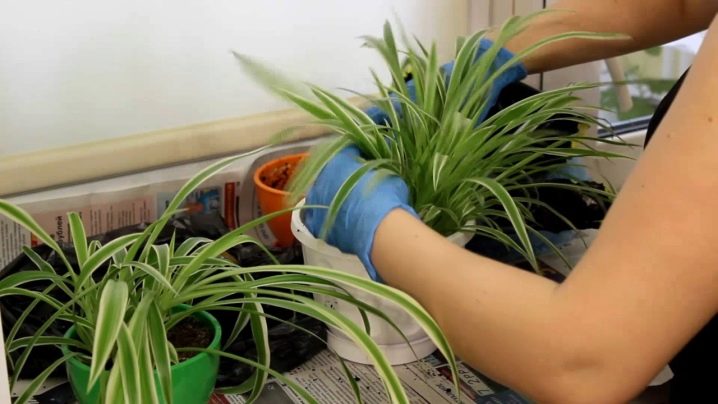
Top dressing
Insufficient intake of nutrients can also lead to drying out of the foliage. Chlorophytum is a plant that does not require frequent feeding. However, with active vegetation, this flower may require more nutrition. In order to feed chlorophytum, it is recommended to use special complex additives. You can use products intended for ornamental flowering plants. This should be done, as a rule, no more than 1-2 times a month (during treatment).
It should be noted that fertilizers for chlorophytum should be used rationally. Abuse of various dressings in order to stimulate flowering can damage the root apparatus of the flower.
For example, the accumulation of sodium in the soil can lead to a deterioration in the vital functions of a plant. If there is an excess of this element in the nutrient substrate, an urgent flower transplant will be needed. In this case, all damaged roots will need to be removed.
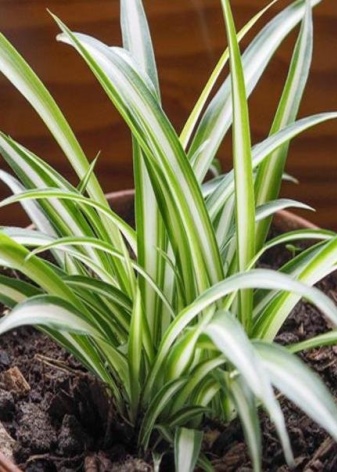
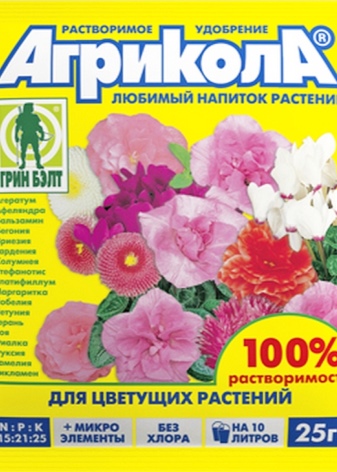
Watering
Severe dryness of the plant is quite often associated with improper watering. Usually, irregular watering - less than twice a week leads to a change in the color of the foliage. If the tips of the leaves begin to turn yellow and dry, then spraying the flower can be applied.
It is recommended to carry out such a procedure during the treatment period approximately once a week. Water the plant with water at room temperature.
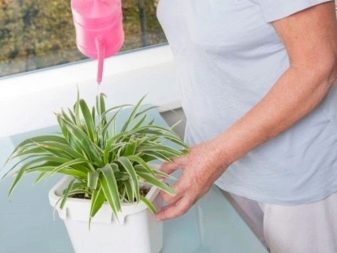
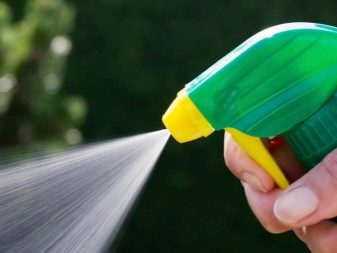
Pests
The appearance of various parasites also leads to a change in the state of the leaves. They usually settle on the lower surface of the leaves and can remain unrecognized for a long time. Therefore, it is recommended to regularly inspect the plants, the leaves must be lifted and their back side examined. If dark spots or plaque appear on it, then this may indicate the development of a parasitic flower disease.
One of the pests that can infect this plant is the scale insect. The diseased flower begins to turn yellow and dry. Severe damage causes foliage to fall off. You can treat a plant from a scale insect in different ways. Affected leaves can be treated with a solution made from laundry soap. If this is not enough, an insecticidal preparation should be applied to them.
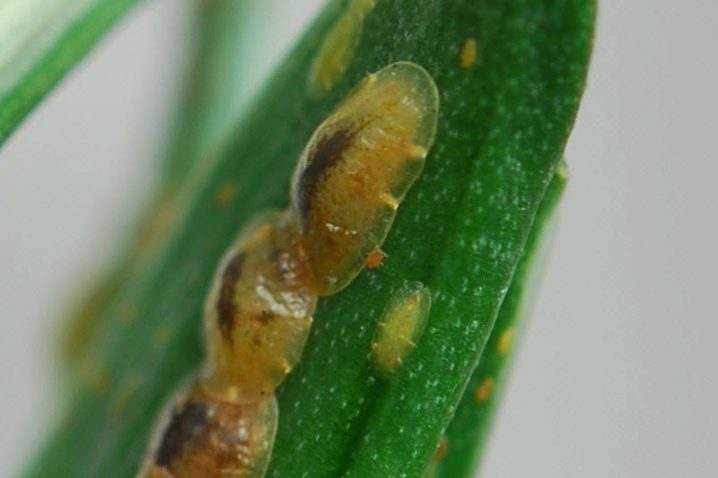
Falling leaves of chlorophytum can also be caused by spider mites. These parasites are dangerous because, as a rule, they infect several flowers at once, which are close to each other. It is quite simple to suspect this disease in a plant - a cobweb appears on it, along which the pest moves. Since the parasite feeds on the sap of the leaves, they begin to dry a lot and then fall off. A plant infected with a tick should be treated with insecticidal agents.
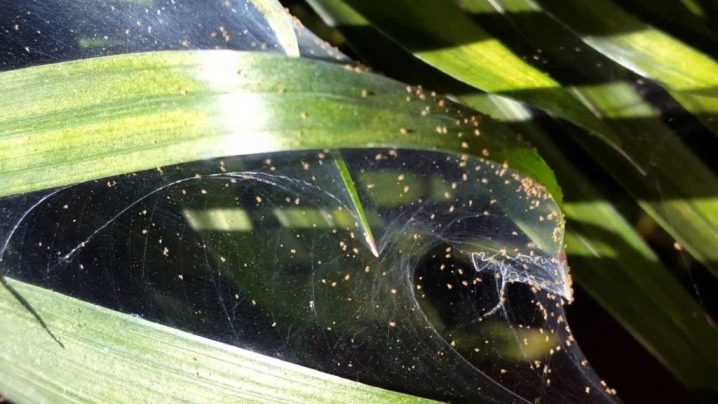
For information on what to do if the leaves of chlorophytum dry, see the next video.





























The comment was sent successfully.